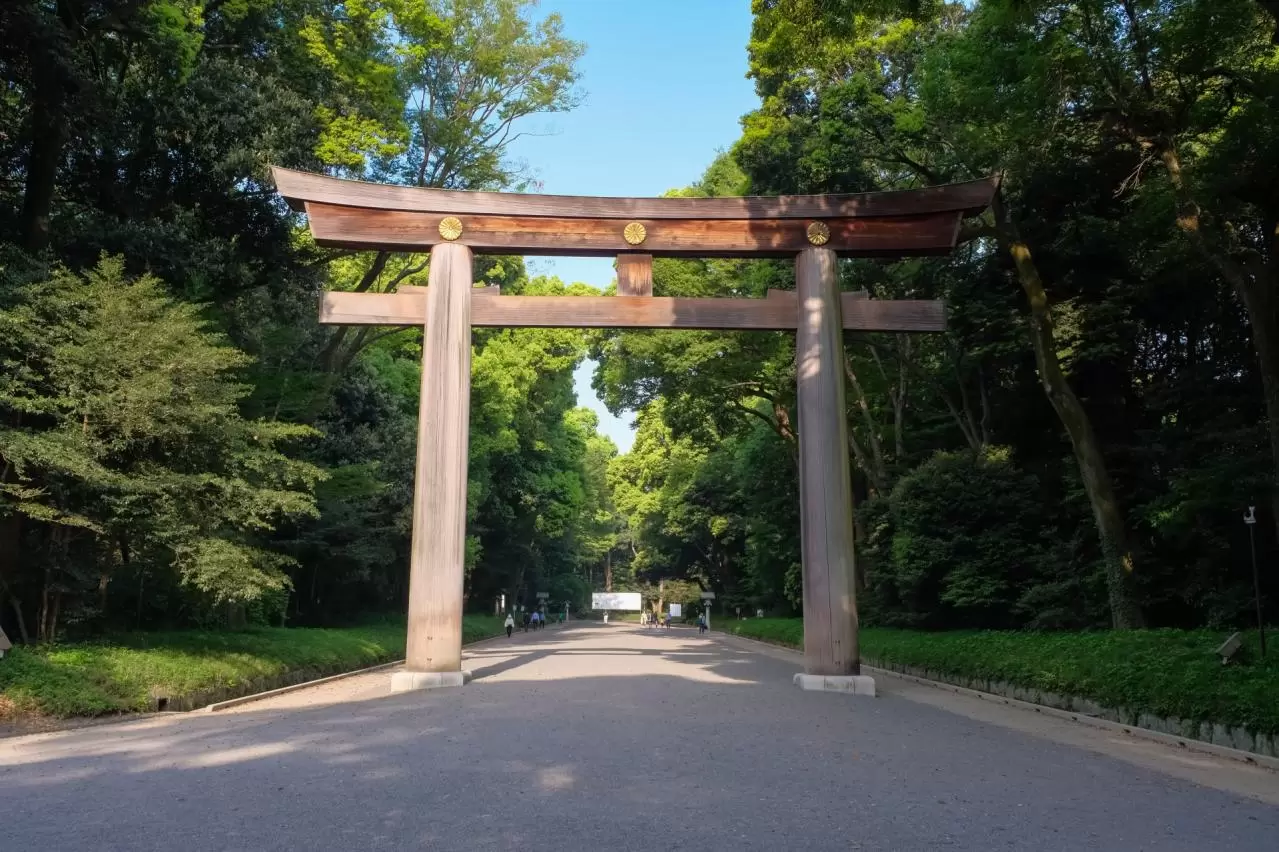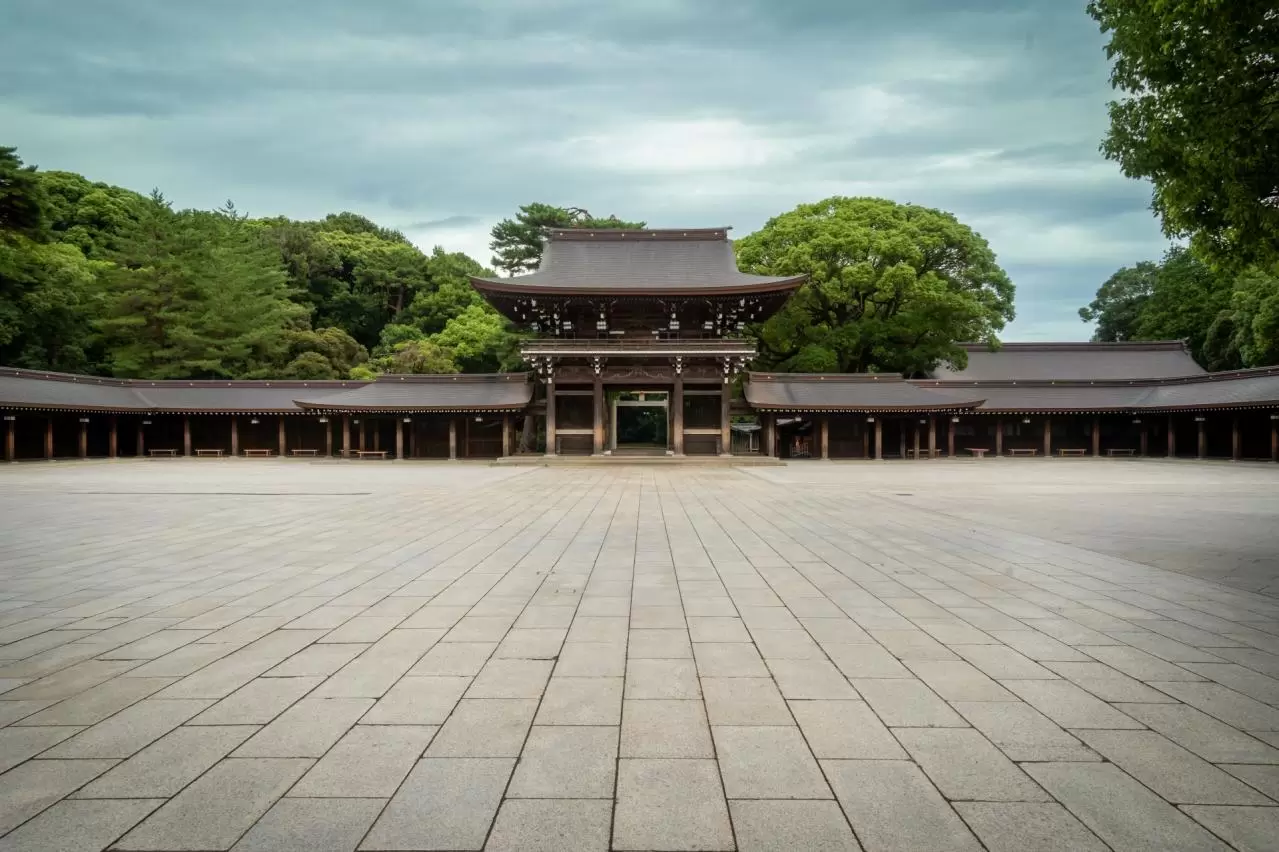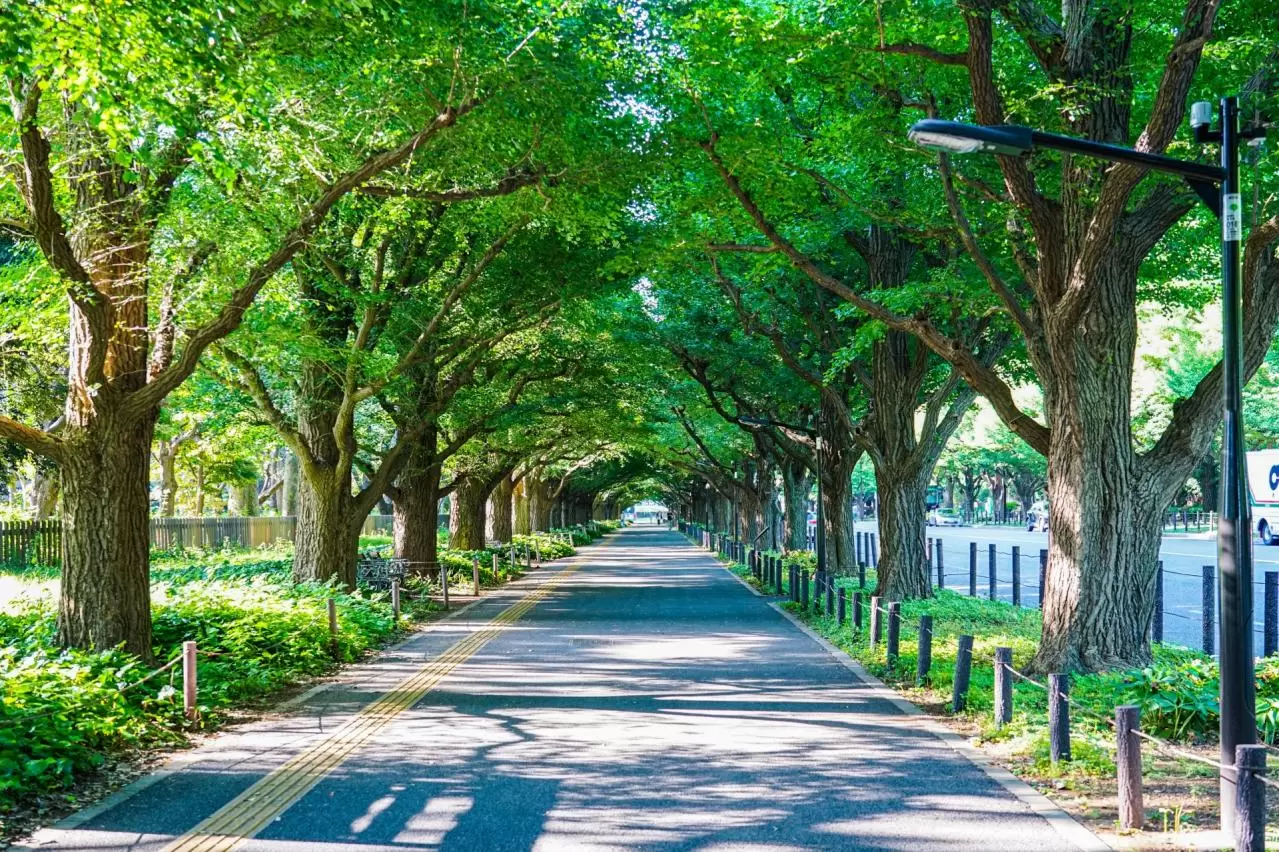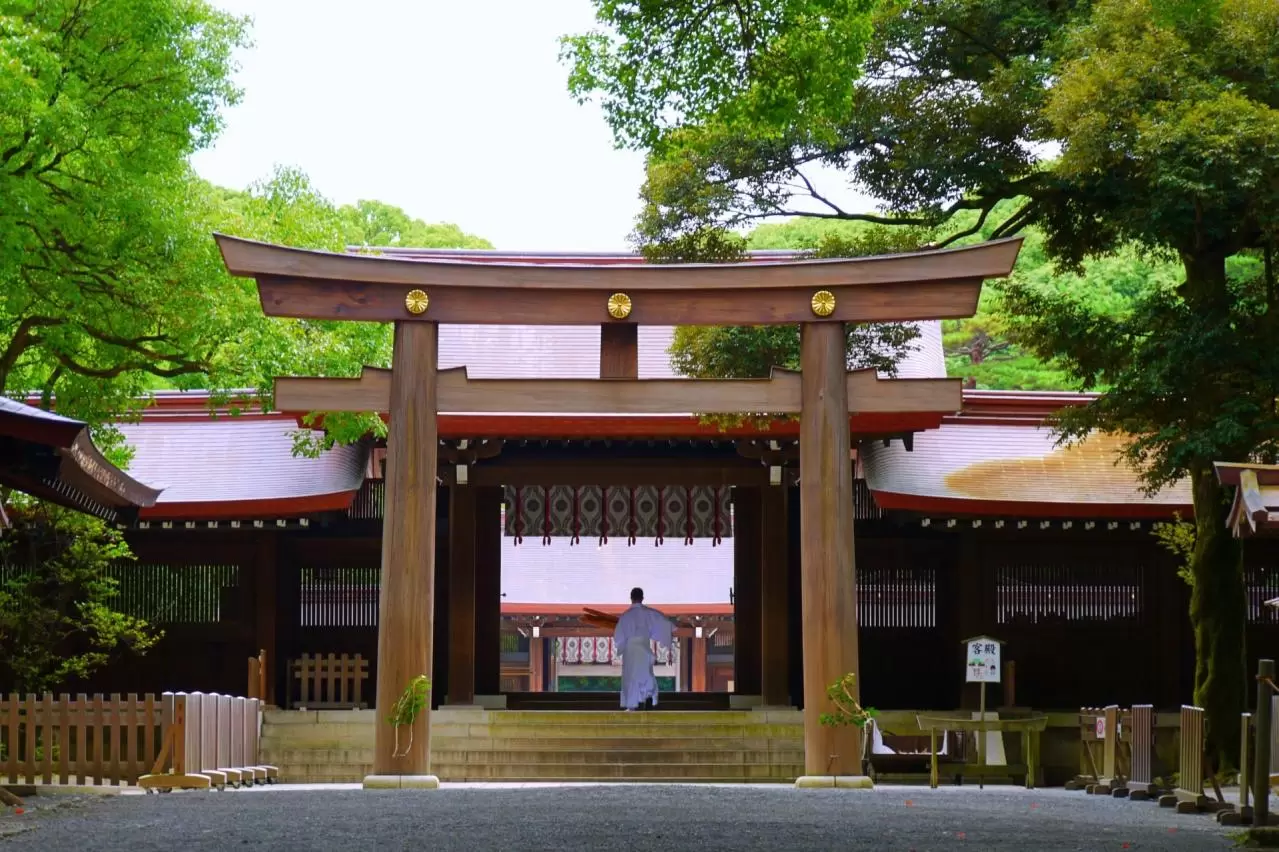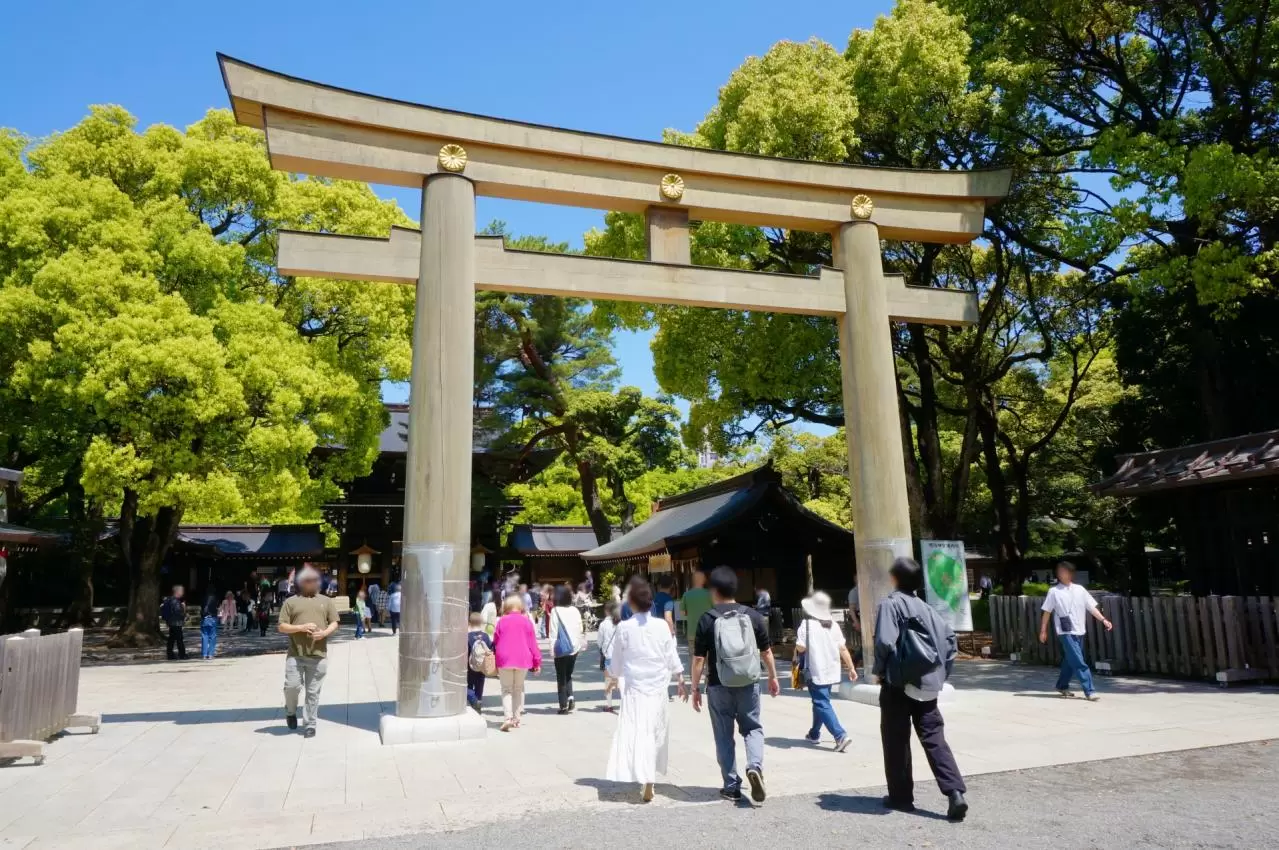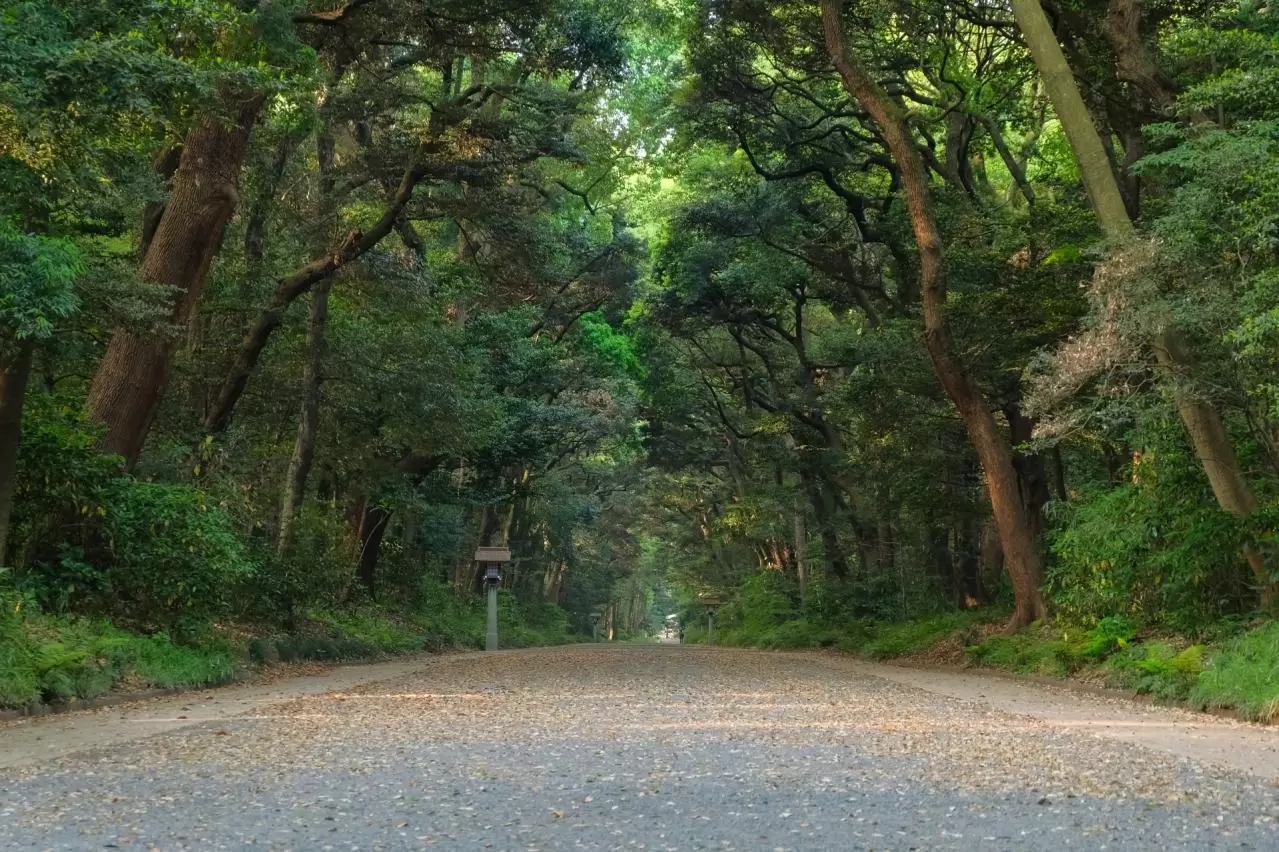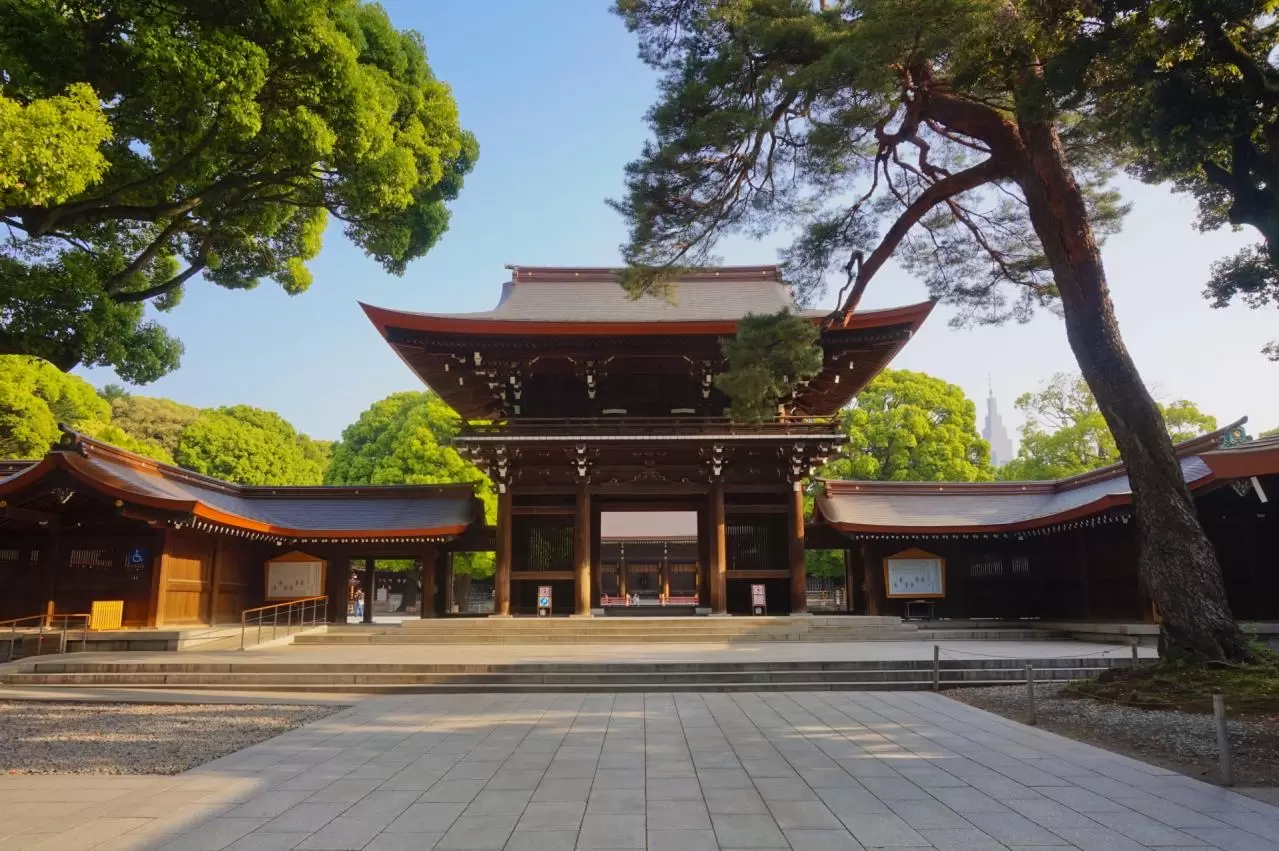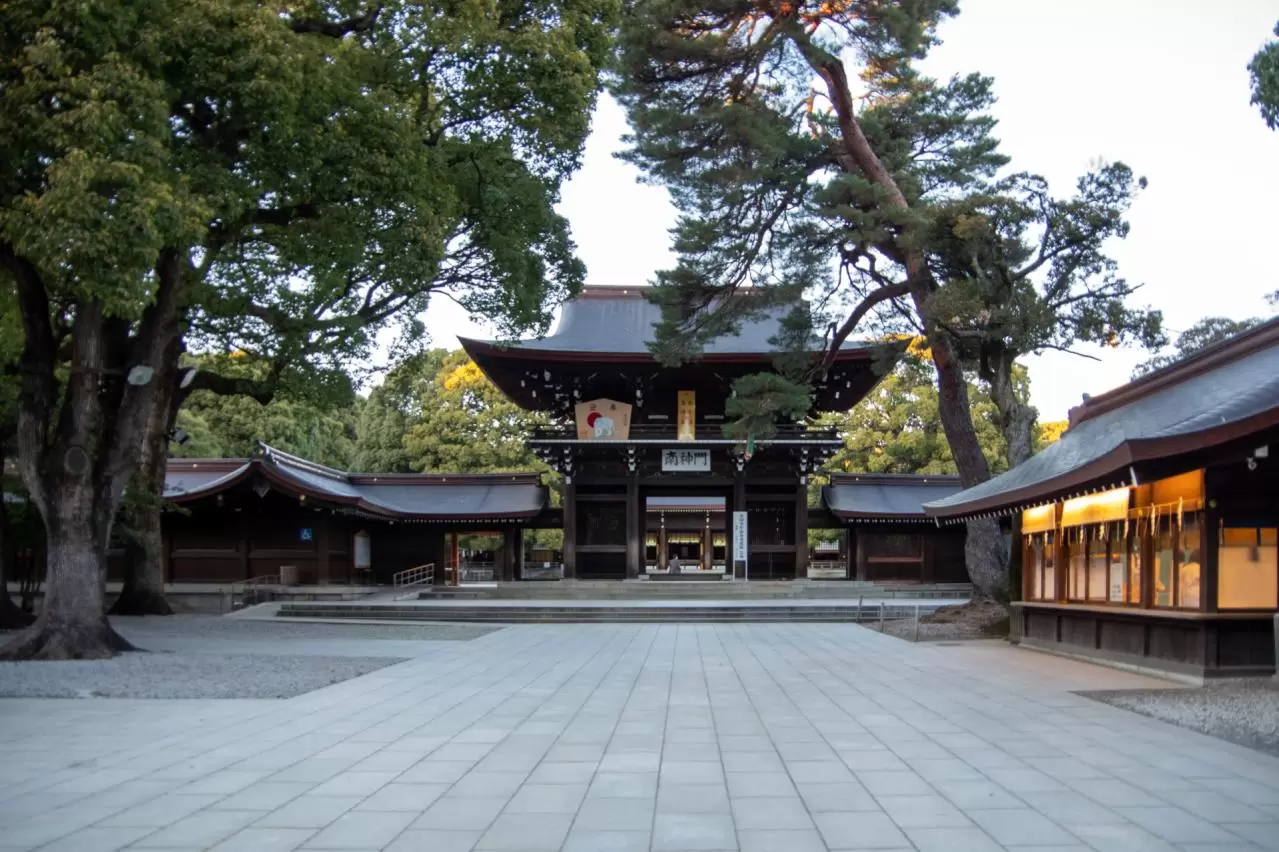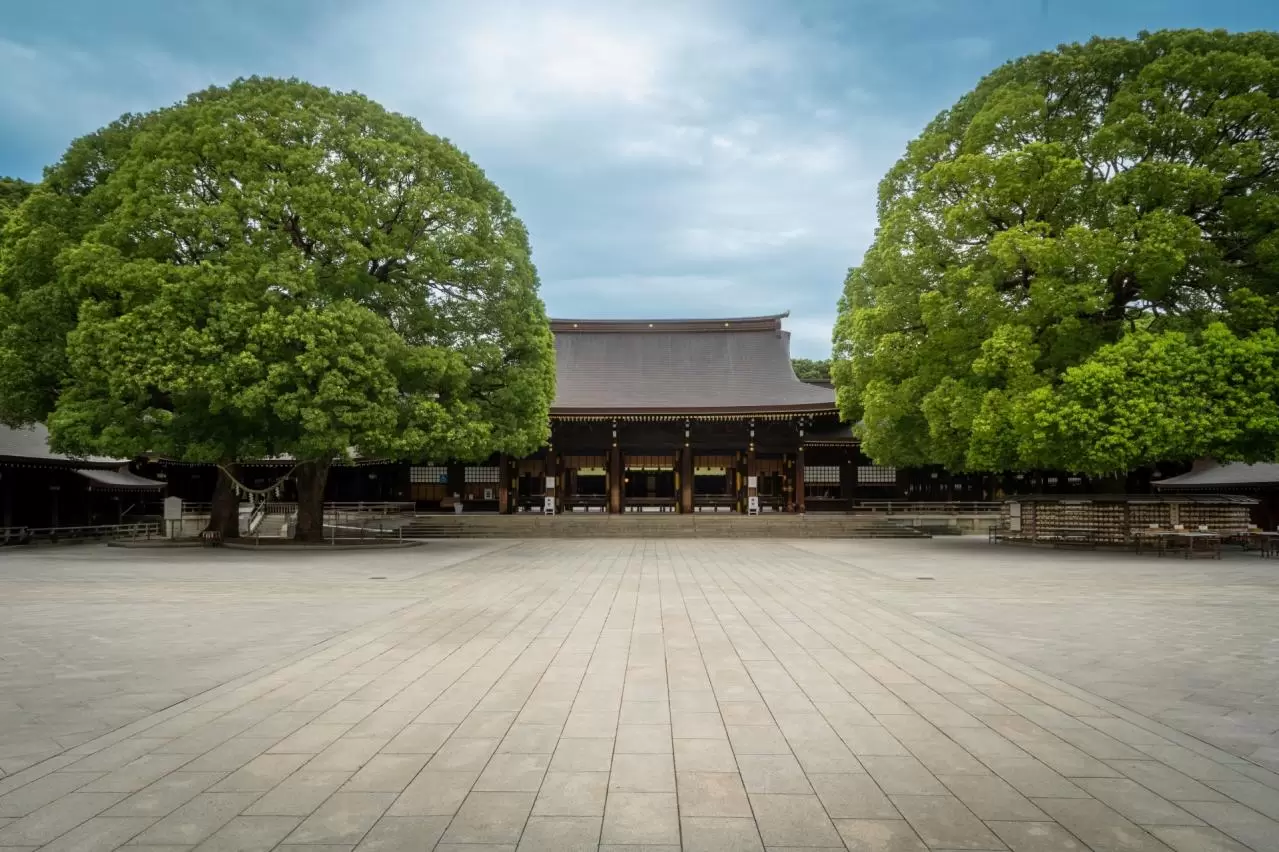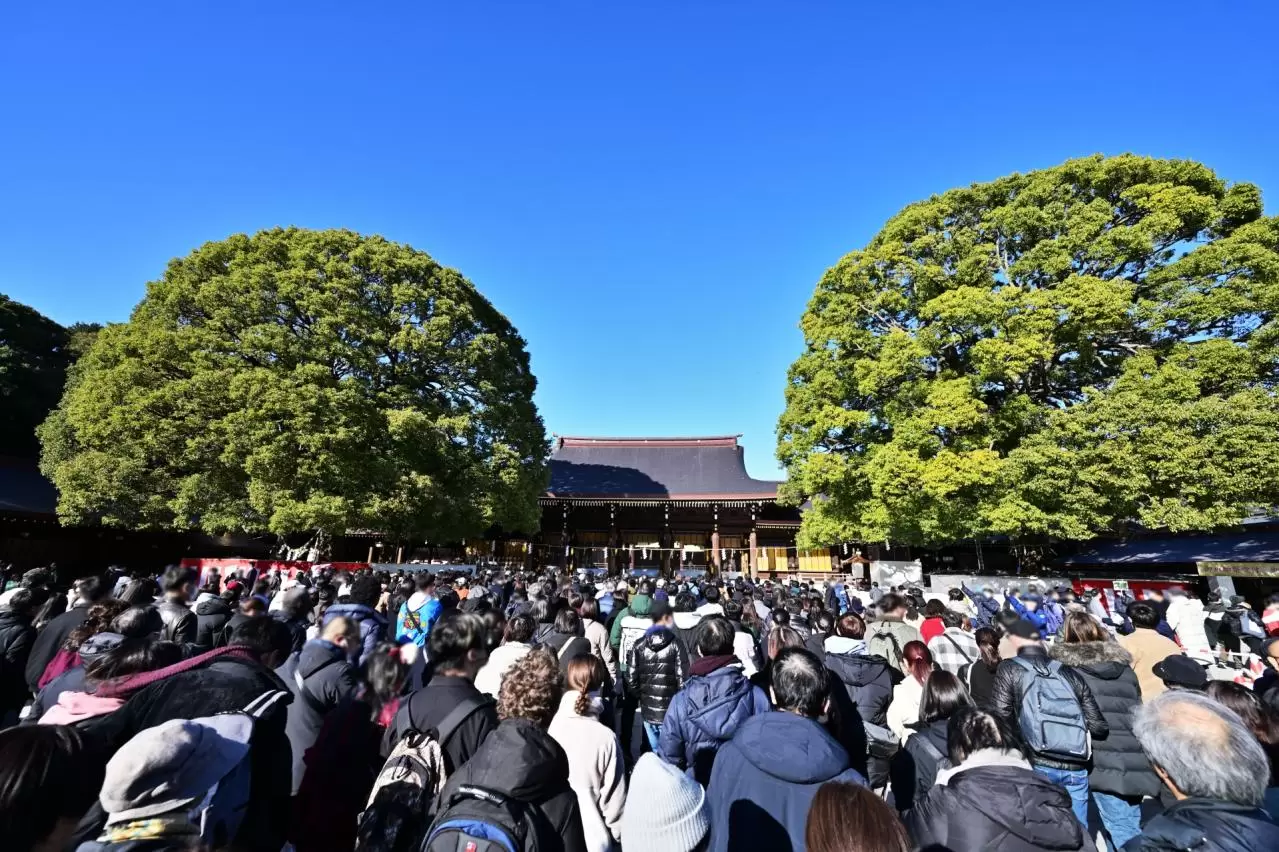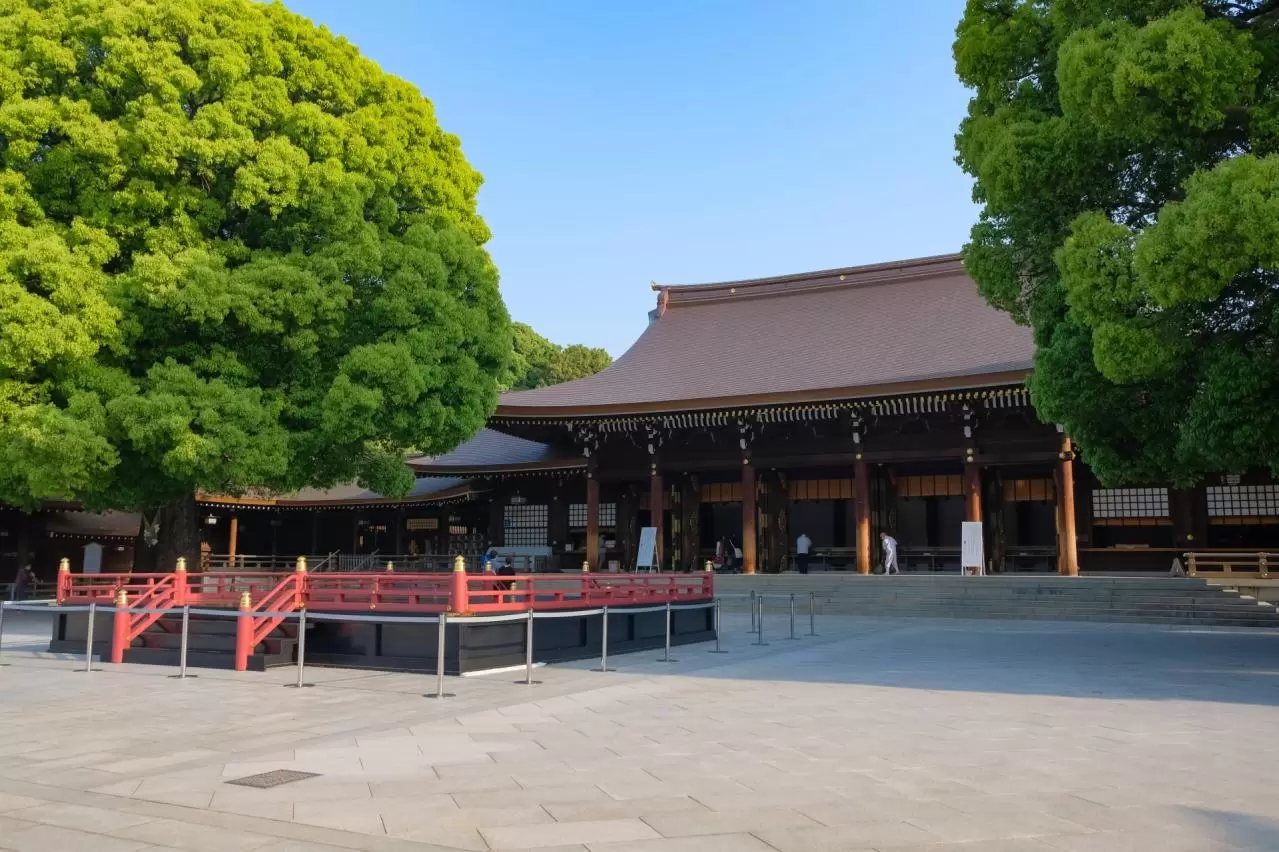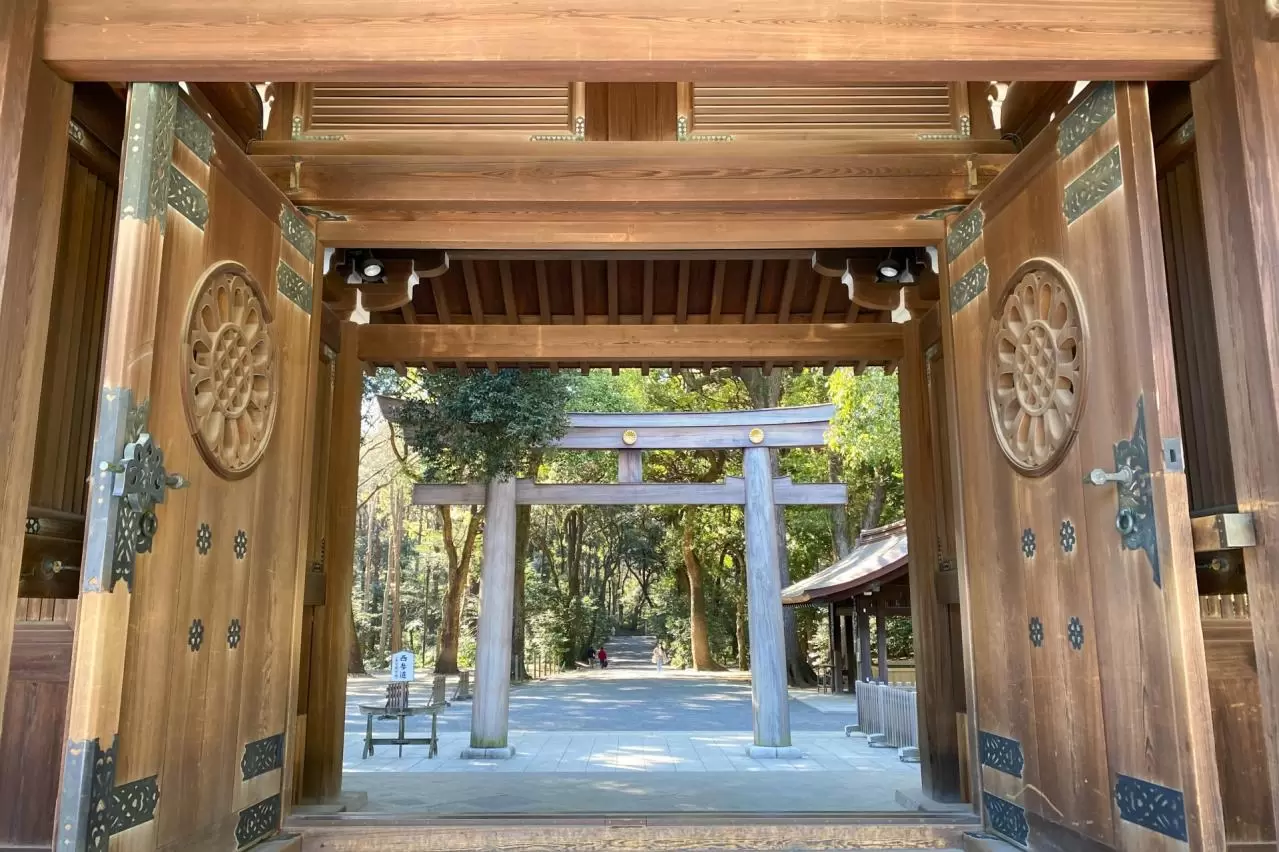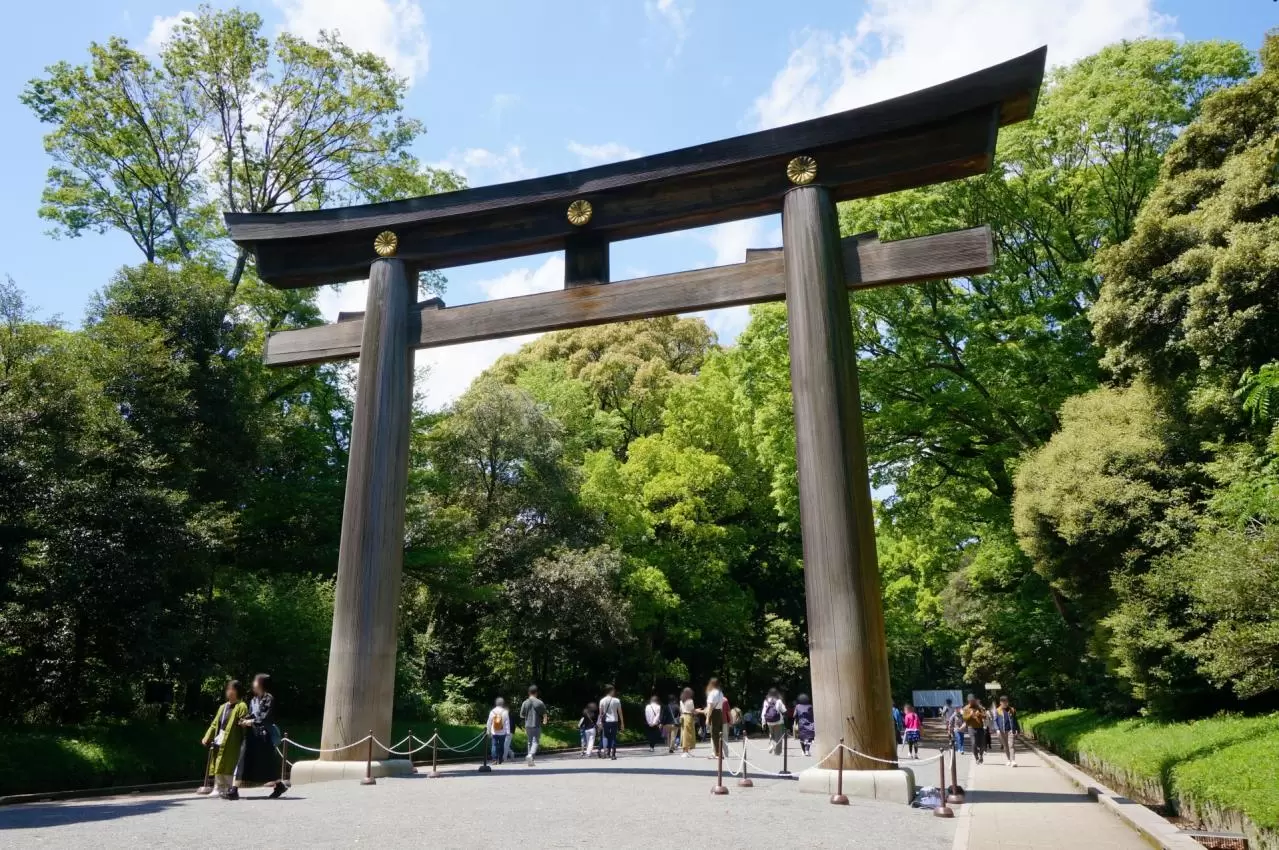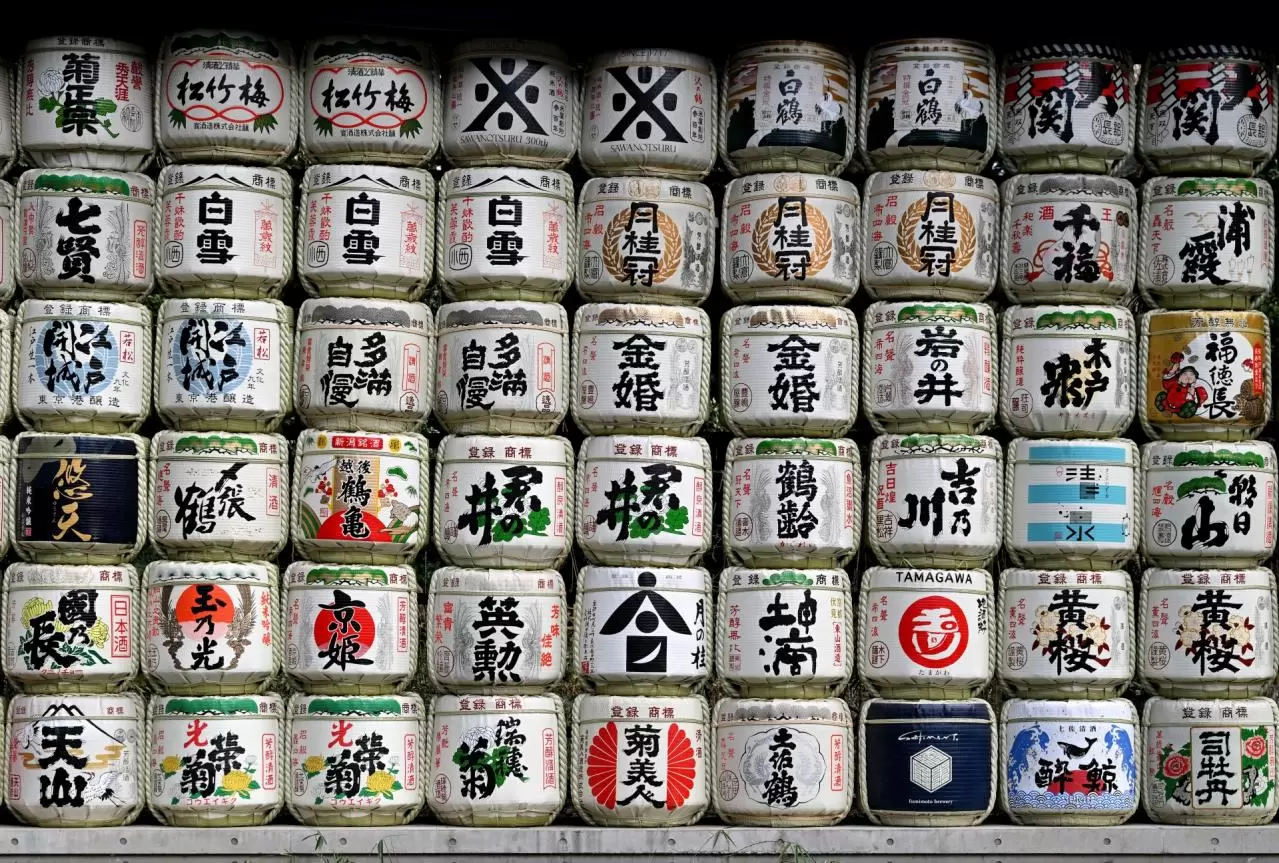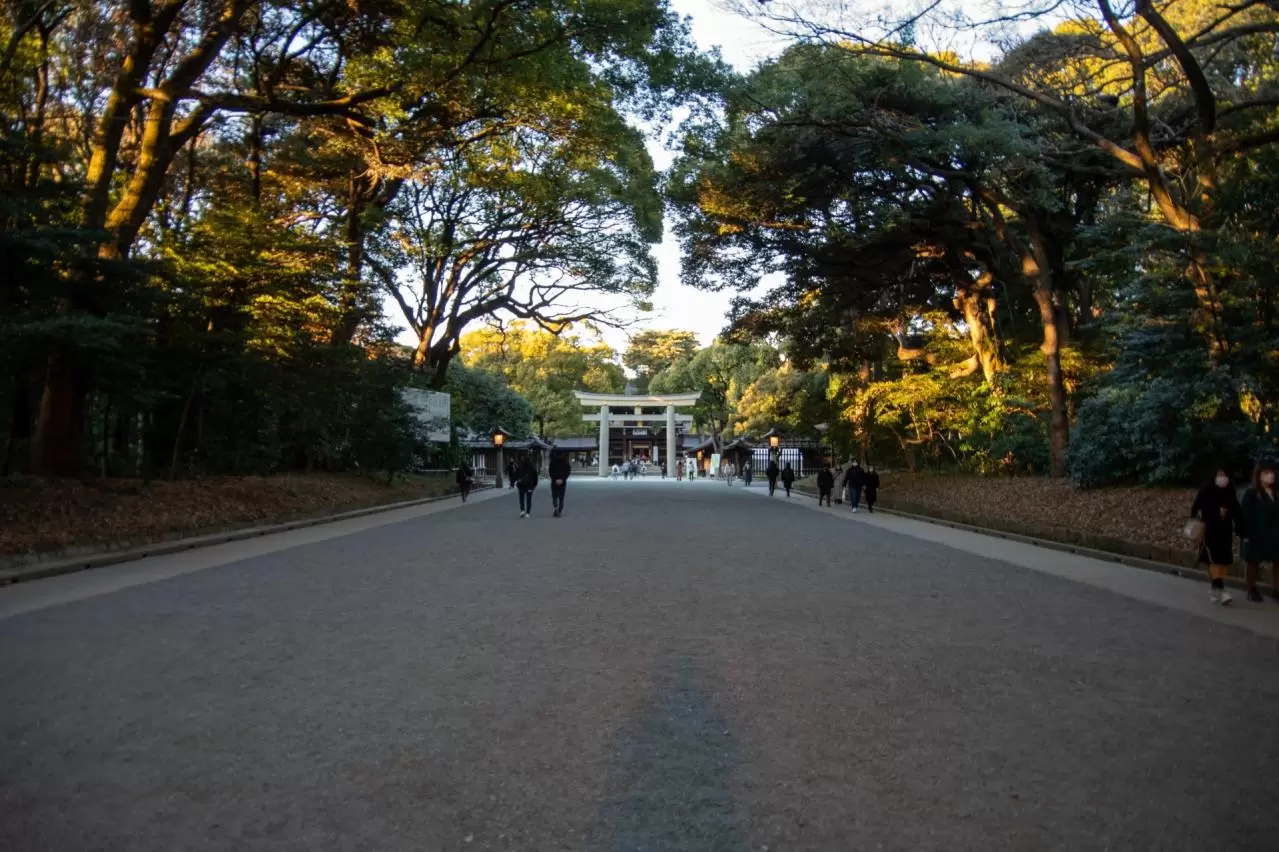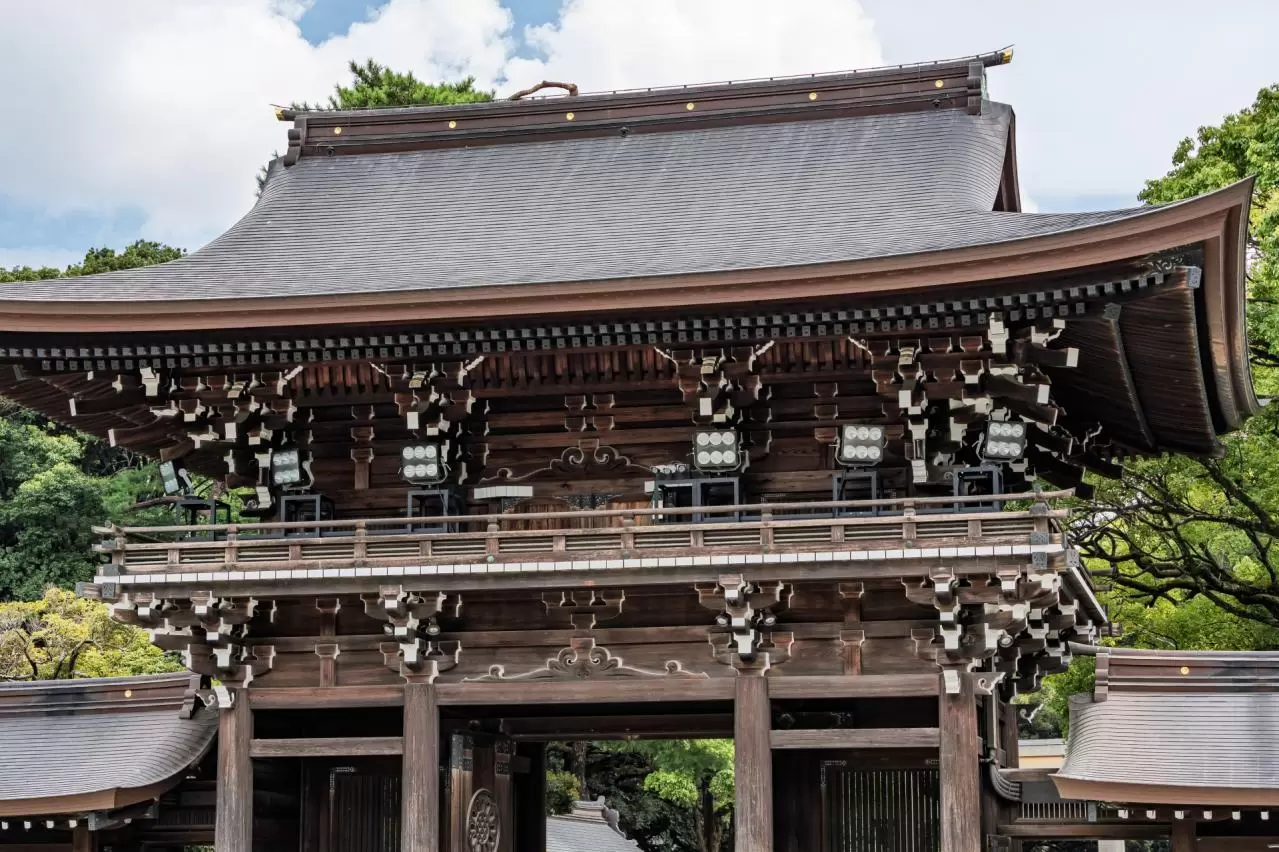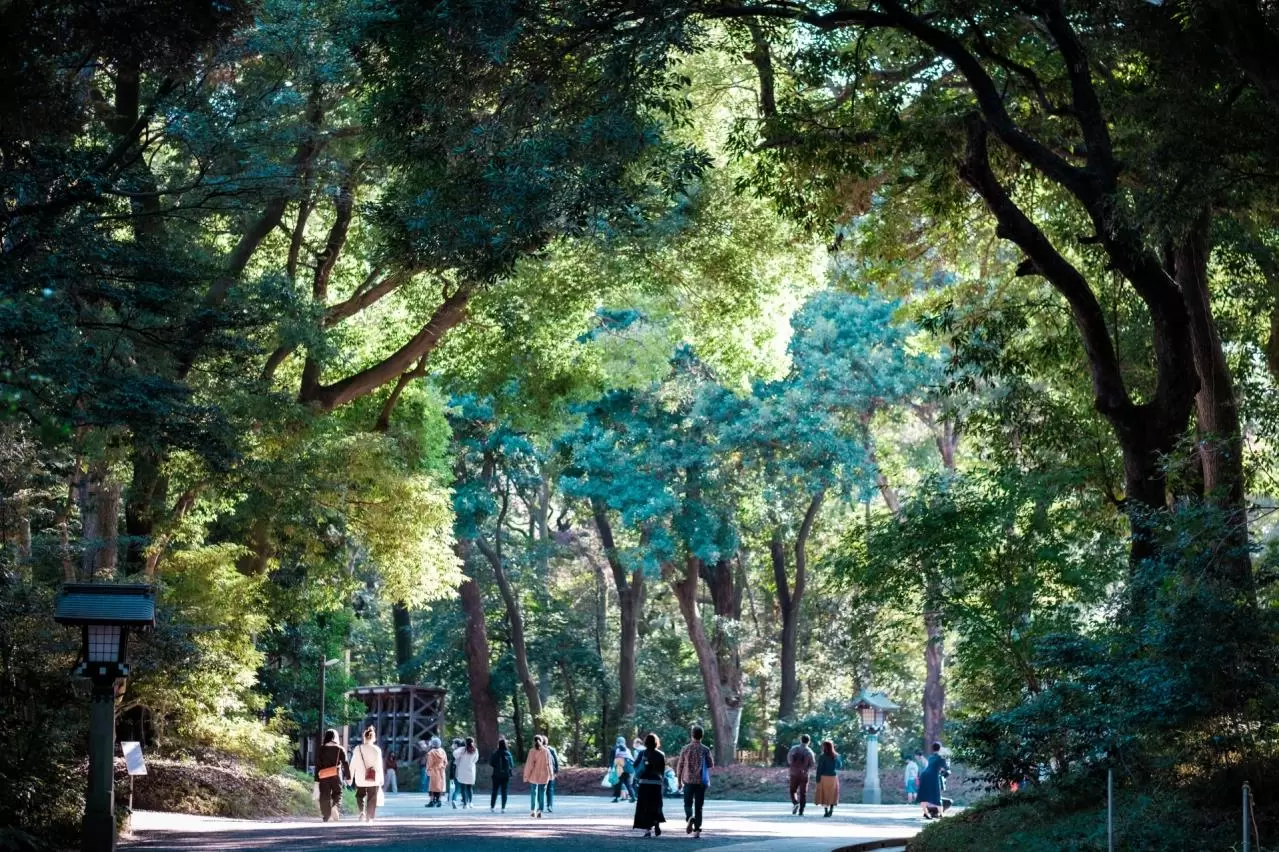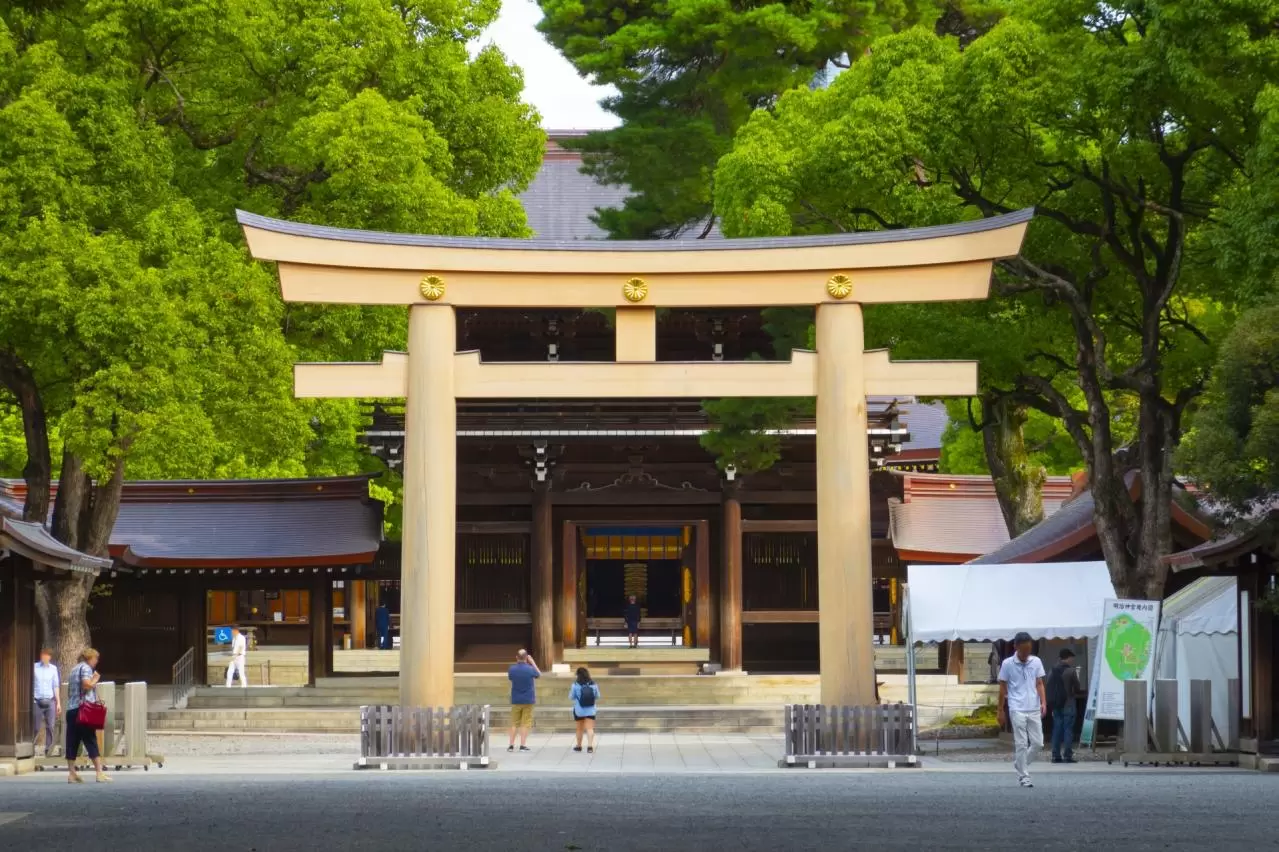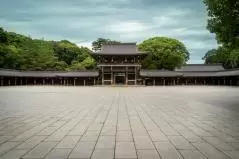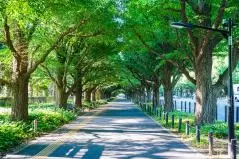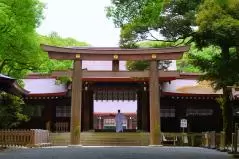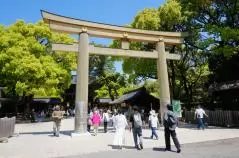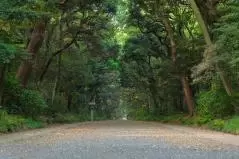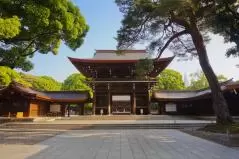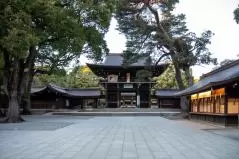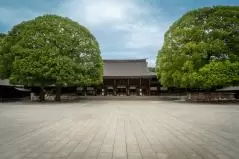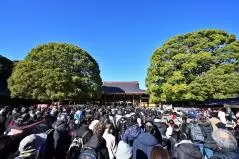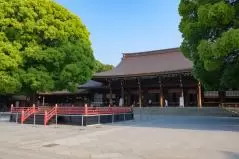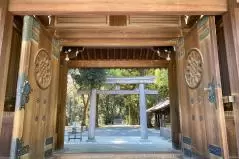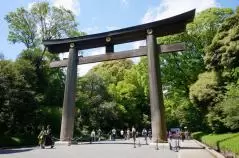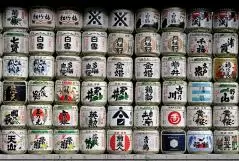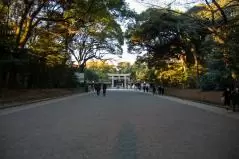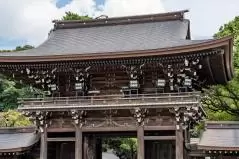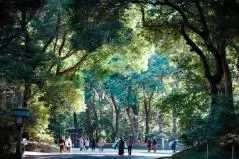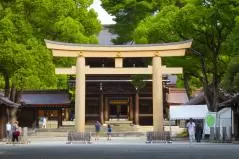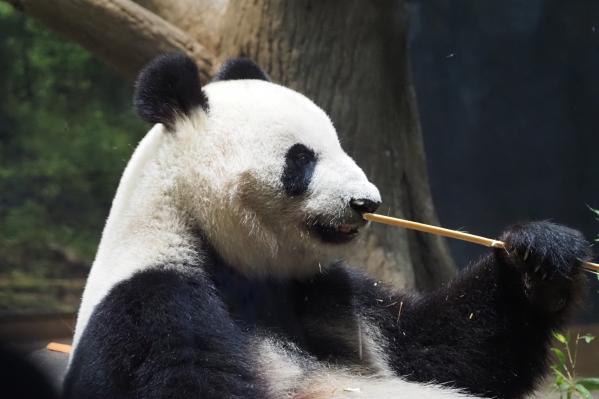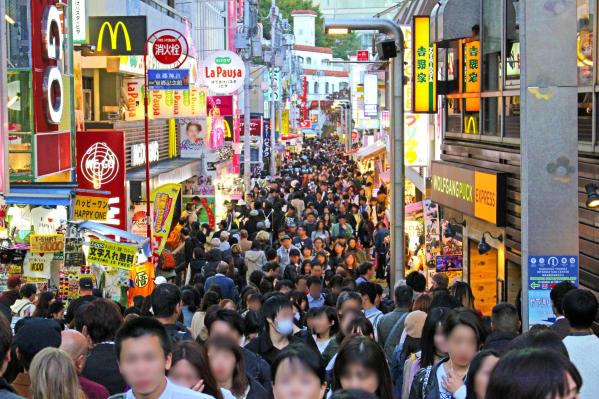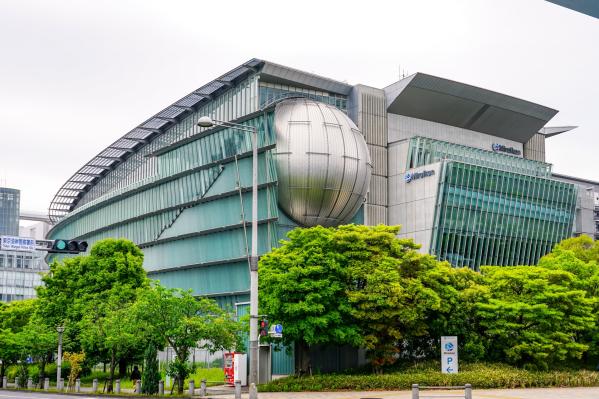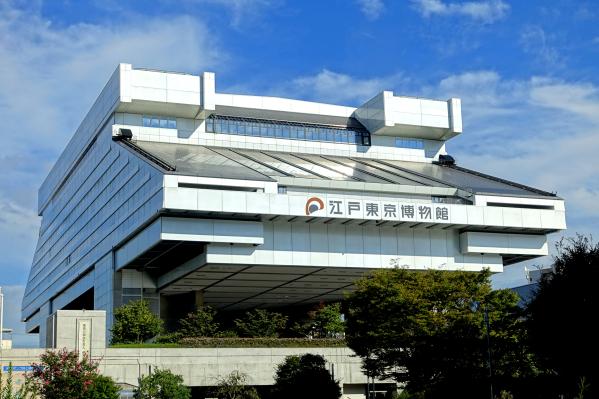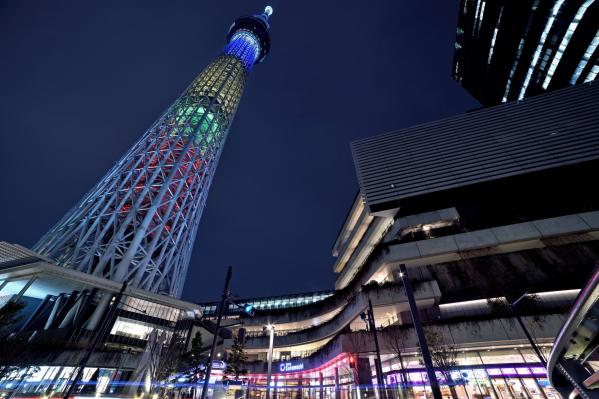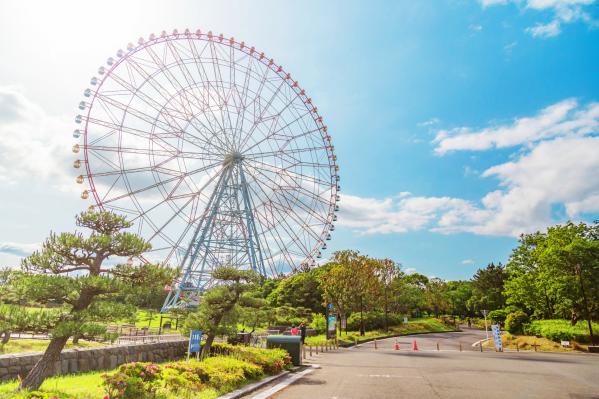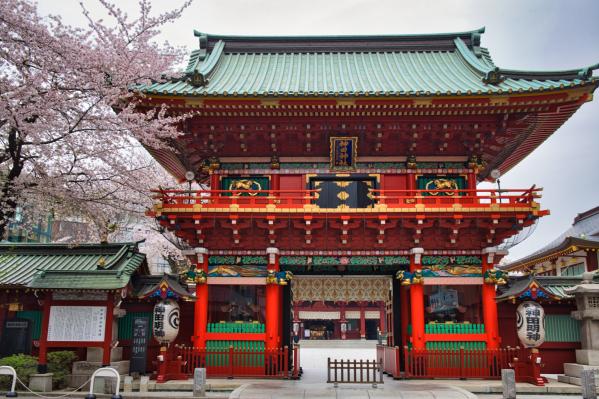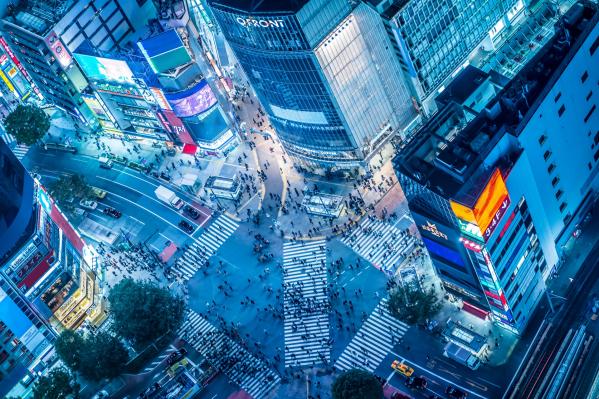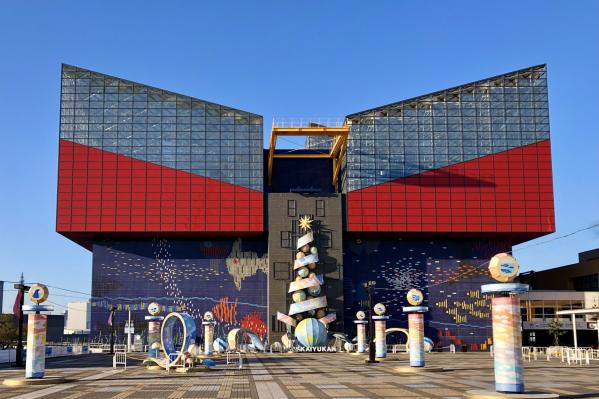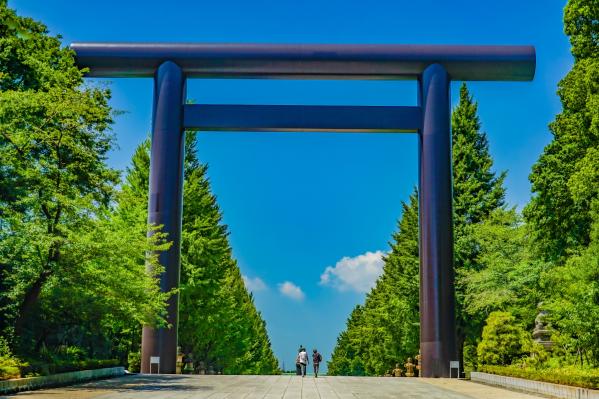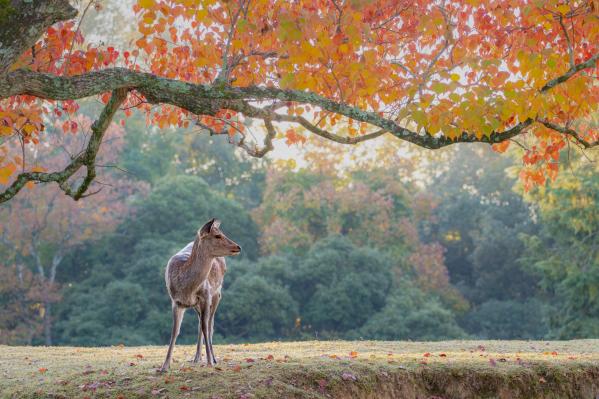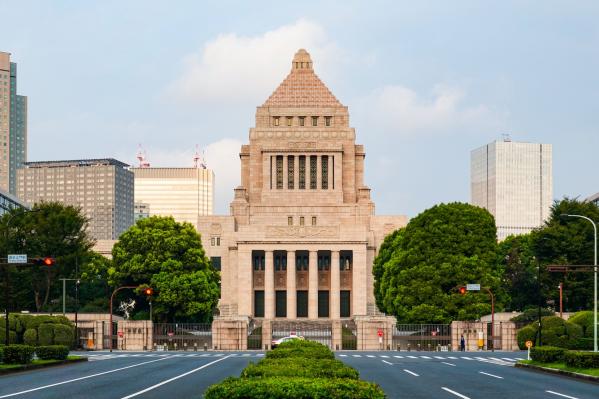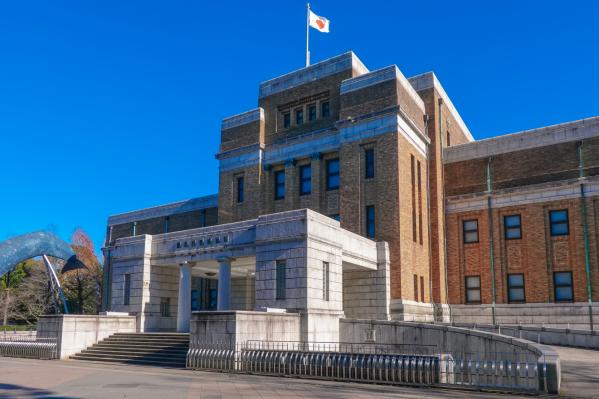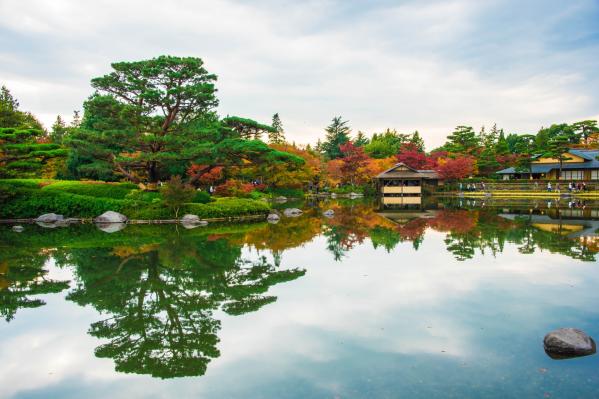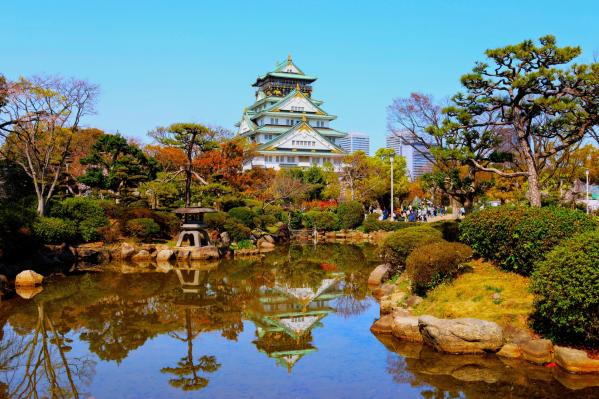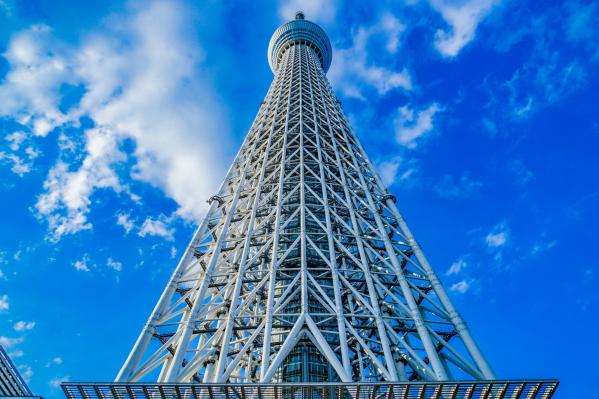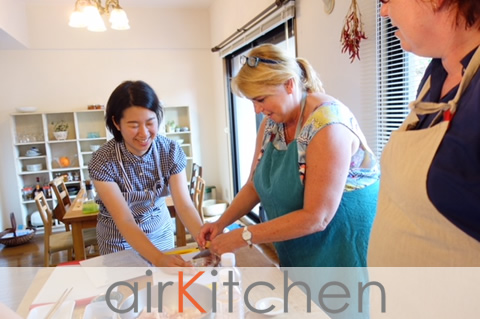Meiji Shrine
Emperor Meiji is a symbolic figure who promoted westernization and modernization, opening Japan to the world. The shrine itself has overcome historical challenges, such as its destruction during World War II, and was rebuilt with the support of the public.
Visitors reach the main shrine through a sacred path lined by a serene forest. More than 100,000 trees have been donated from across Japan, creating this tranquil environment, often referred to as an "oasis in the city." In recent years, it has also drawn attention as a power spot.
Meiji Shrine spans approximately 700,000 square meters of artificial forest, which was created with the aim of becoming an "eternal grove." Major buildings were destroyed in air raids during the 20th year of the Showa era, but substantial donations led to their reconstruction in the 33rd year of Showa.
The shrine was established following the passing of Emperor Meiji in 1912 and Empress Shoken in 1914, driven by the heartfelt wishes of the nation. Today, many people visit to seek the history, culture, and inner peace that it offers.
Basic Information
- Spot Name
- Meiji Shrine
- Location
- 〒151-8557 1-1 Yoyogi Kamizono-cho, Shibuya-ku, Tokyo, Japan
- Access
- Immediately after getting off at JR Yamanote Line "Harajuku Station" or Tokyo Metro Fukutoshin Line "Meiji-Jingu Mae (Harajuku) Station"
About a 3-minute walk from Odakyu Line "Sangubashi Station"
About a 5-minute walk from JR Conventional Line and Toei Oedo Line "Yoyogi Station"
About a 5-minute walk from Tokyo Metro Fukutoshin Line "Kita-Sando Station" - Parking
- Parking available
- Business Hours
- Meiji Shrine opens at sunrise and closes at sunset. Therefore, the opening and closing times vary by month.
January: 6:40 AM - 4:20 PM
February: 6:20 AM - 4:50 PM
March: 5:40 AM - 5:20 PM
April: 5:10 AM - 5:50 PM
May: 5:00 AM - 6:10 PM
June: 5:00 AM - 6:30 PM
July: 5:00 AM - 6:20 PM
August: 5:00 AM - 6:00 PM
September: 5:20 AM - 5:20 PM
October: 5:40 AM - 4:40 PM
November: 6:10 AM - 4:10 PM
December: 6:40 AM - 4:00 PM - Contact Information
- Phone Number:03-3379-5511
- Official Website
Map
Detailed Information
Before the creation of Meiji Jingu, the area was known as the South Toshima Imperial Land, a royal property, which consisted mainly of fields and a landscape resembling wasteland, except for the current area of the Gyoen. Scholars of the highest caliber were gathered to plan the construction of the "Eternal Forest," dedicated to Emperor Meiji and Empress Shoken, where people could quietly pray. Most of the trees planted were donations, with about 100,000 trees contributed from across the country. A total of 110,000 young people participated in labor service for the construction work, sweating through tree planting and the creation of pathways in this forest of Meiji Jingu.
In the construction process, forestry experts such as Seiroku Honda, Taketoku Hongo, and Keiji Uehara considered what types of trees to plant to create the "Eternal Forest," concluding that evergreen broadleaf trees, such as Chinquapin, Oak, and Camphor, should be the primary species to be planted in anticipation of the future. The reasoning behind this decision was that by the Taisho era, pollution had already progressed in Tokyo, and many large and old trees in the city were dying one after another. Thus, they concluded that only evergreen broadleaf trees could thrive in Meiji Jingu a hundred years ahead.
However, then-Prime Minister, Shigenobu Okuma, insisted on having the forest resemble that of the Ise Shrine or Nikko Toshogu, stating, "Are we going to turn the Jingu forest into a thicket? A thicket is undesirable; it should be a cedar forest." The forest committee strongly opposed Okuma's opinion, explaining from a forestry standpoint that while cedars grow best in humid valleys, this area of Yoyogi was unsuitable for them, and cedars would not thrive in an urban environment.
In April 1945, many of the shrine’s buildings were destroyed in an air raid, but the forest served as a refuge for people and suffered little damage. It may have escaped significant fire damage because it was composed of broadleaf trees rather than easily flammable conifers.
As part of the 50th-anniversary project of the shrine's enshrinement, a comprehensive survey of the grounds centered on tree assessment was conducted, the results of which were published in 1980. A second comprehensive survey, which included an investigation of biodiversity involving animals, was conducted for the 100th anniversary of the shrine, with its report published in 2013. These studies academically investigate how the forest has developed.
At the start of the construction, the inner garden contained approximately 120,000 trees of about 365 species, including native species. According to the second comprehensive survey, this number has decreased to about 36,000 trees of 234 species. Natural selection has taken place, and the trees have grown larger. Furthermore, around 3,000 species of living organisms, including new species and endangered species as well as rare plants and animals in Tokyo, have been reported, generating considerable interest.
Meiji Shrine Movies
Tokyo Tourist Attractions
View ListTakeshita Street
Takeshita Street is a 350-meter long street located just outside Harajuku Station in Shibuya, Tokyo. It is popular as the center of Harajuku's "Kawaii culture," line...
National Museum of Emerging Science and Innovation (Miraikan)
The National Museum of Emerging Science and Innovation, commonly known as Miraikan, opened in Odaiba, Tokyo, in 2001. It is operated by the Japan Science and Technol...
Edo-Tokyo Museum
The Edo-Tokyo Museum in Tokyo is a cultural facility that opened in 1993, dedicated to teaching about the history and culture of Tokyo over approximately 400 years, ...
Tokyo Solamachi
Tokyo Solamachi is a large commercial facility located at the base of Tokyo Skytree®, boasting over 300 shops. It features a variety of fashion items, miscellaneous ...
Kasai Rinkai Park
Kasai Rinkai Park, located along Tokyo Bay, is an urban oasis packed with attractions that can keep you entertained all day long. Its excellent access, just a one-mi...
Kanda Shrine
Kanda Myojin, located in Chiyoda, Tokyo, is a historic shrine established in 730 AD, where Tokugawa Ieyasu is said to have prayed for victory in battle. It is the ch...
Shibuya Scramble Crossing
Shibuya Scramble Crossing is one of the iconic landmarks of Tokyo, where more than 1,000 people are said to cross at once during peak hours. This intersection, leadi...
